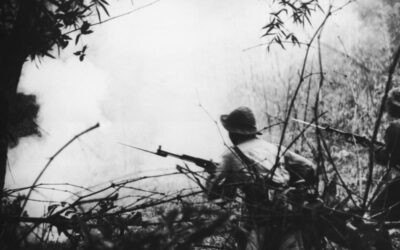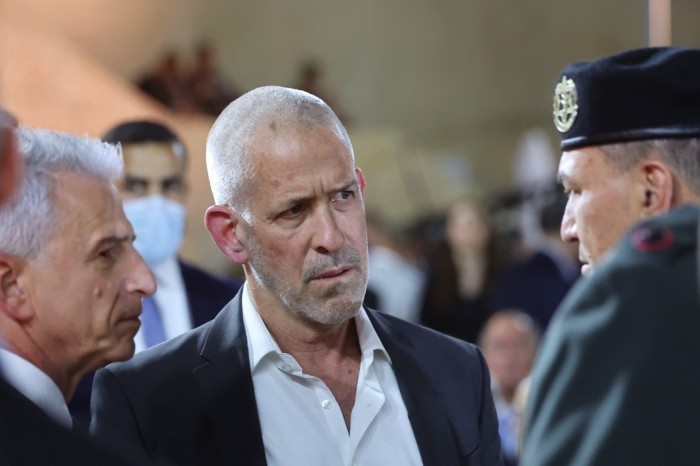The neighbourhood fight for Canada’s national soul

This year, Canadians June and Bob Neske went from life-long Conservatives to Liberal Party voters in less than a month.
The retired military couple from Corkery, a rural community in west Ottawa, had consistently voted for Conservative party leader Pierre Poilievre but have joined efforts to dislodge him from his seat.
“We jumped ship, absolutely,” June said from the Liberal party campaign office in the Carleton riding. “I became disenchanted . . . Mostly due to Poilievre’s subliminal messages, we know the message of the far right. Ethically and morally I am not able to support that.”
The national election on Monday has come down to a contest between Prime Minister Mark Carney and Poilievre, two leaders with very different personalities, experiences and visions for Canada.
“My husband Bob has never voted Liberal his whole life but will in this election. He loves Mark Carney,” June said.
Carney converts are one reason Poilievre has lost a 25 point lead that in December had him positioned as Canada’s likely next prime minister. This week there is talk that he may lose his own seat.
The Conservative party did not respond to requests for comment.
Carney’s safe Liberal seat of Nepean borders Poilievre’s Carleton. The thin line between them reflects a broader national split of urban versus rural, technocratic versus populist leader, progressive versus libertarian values.
On Monday, Canadians will decide whether Carney, a 60-year-old former governor for the central banks of Canada and England, is the preferred man to steer their country through the economic uncertainty unleashed by US President Donald Trump.
The alternative is 45-year-old career politician Poilievre, whose “common sense” agenda promises to restore the so-called “Canadian dream” through tax cuts, energy infrastructure projects and a tough stance on crime.
“Last election, I voted Conservative because of [Liberal leader] Justin Trudeau, but now it is a different choice as Trudeau is gone,” June said. “I know people will still vote for Poilievre but the issue for me is his rhetoric, I don’t like it.”
Much of Poilievre’s popularity since becoming Conservative leader in September 2022 stems from harnessing anger over the cost of living and housing prices. He relentlessly attacked Trudeau, who in early January announced he would resign when a new party leader was chosen, and still regularly refers to him.
But the nation’s mood shifted to supporting the Liberals after Trump entered the arena that month and Carney became the prime minister in early March.
“Poilievre losing Carleton makes for a good story but I wouldn’t put any stock in it all,” said Dan Nowlan, an adviser in the government of former Conservative prime minister Stephen Harper.

Nowlan said there “are some encouraging signs”, for a Conservative victory on Monday.
“If young voters turn out and we have over 20mn voters this time versus the 17mn in 2021, I think we could win the most seats,” he said.
Earlier in the week, Elections Canada, the government agency that oversees the vote, reported 7.3mn people had voted in the advance polls, a 25 per cent increase for the same period before the 2021 general election.
Carleton had the nation’s highest voter turn out with 43,394 ballots.
This enthusiasm does not indicate who is voting and for whom. But what is clear is that many Canadians are choosing between anger over the Liberal party’s past record in power or fears of future turmoil because of Trump.
The popular vote does not matter as much as who wins Canada’s marginal or swing seats, especially in the Greater Toronto Area, home to 7mn people.
Carleton’s Liberal candidate Bruce Fanjoy, who is trying to topple a 20-year incumbent, said the real change Canada needs is getting rid of Poilievre.
“There’s a lot of buzz in Carleton, people have grown tired of his style of politics, and the US style he’s imported and his inability to deal with Trump,” he said.
Poilievre’s challenge has been in distancing himself from Trump after having attracted the endorsement of high-profile Maga backers at a time when the US president’s antagonism towards Canada rallied the nation behind Carney.
Poilievre also needs to gain ground across Ontario, Canada’s most populous province and one of the country’s economic engines that will be hardest hit by US tariffs.

On Saturday Carney made a final push in Ontario while on Sunday Poilievre was expected to make a whistle stop tour of the province that culminates in a final rally in Edwards, a small town in his Carleton district.
The polls show Canada’s minor parties such as the New Democratic Party and the French-speaking Bloc Québécois have lost significant support to Carney. They are also more likely to align with the Liberals should there be a minority government alliance.
The Canadian Broadcasting Corporation’s poll tracker, an aggregate of nationwide polling, shows the margin between the two parties has tightened but the Liberals are favoured to win most seats.
On Thursday night over the road from Poilievre’s Carleton campaign headquarters in Manotick at a strip mall outside a Loblaws grocer, Heidi, 76, said she is voting for Carney — the first time she has voted for the Liberal party.
“Poilievre is too abrasive, he is not nice any more,” she said.
“Abrasive? Poilievre is down to earth, no nonsense,” said Melissa, 40, who asked for her full name not to be used because it could affect her small business.
“We have three mouths to feed, every time we do the groceries it costs an extra 70 bucks,” she said.
Poilievre needs voters such as Melissa and her husband to turn their frustration with the Liberal government into a decisive reckoning at the ballot box.
“I read Carney’s book, it is very clear what his platform is — more taxes,” she said.




